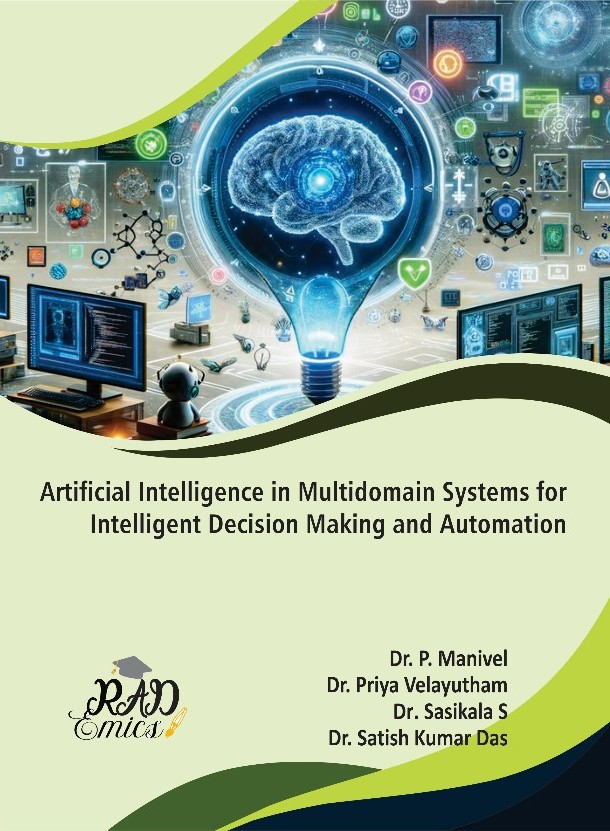
Peer Reviewed Chapter
Chapter Name : Deep Learning Architectures for Intelligent Image Analysis and Pattern Recognition in Healthcare
Author Name : R. Ragunathan, NMK Ramalingam Sakthivelan, K. Santhanalakshmi
Copyright: ©2025 | Pages: 38
DOI: 10.71443/9789349552357-05
Received: WU Accepted: WU Published: WU
Abstract
The convergence of deep learning and medical imaging has significantly advanced the field of intelligent healthcare, enabling precise and automated analysis of complex biomedical data. This chapter presents a comprehensive exploration of state-of-the-art deep learning architectures applied to image analysis and pattern recognition tasks across diverse clinical domains. It critically examines the role of convolutional, recurrent, and generative models in enhancing diagnostic accuracy, segmentation quality, and prognostic modeling. Special emphasis is placed on challenges posed by variability in imaging protocols, inter-institutional heterogeneity, and multi-modal data integration. The chapter further discusses domain adaptation strategies and statistical methods for quantifying cross-domain performance, essential for achieving model generalizability and clinical robustness. Real-world applications in oncology, neurology, and cardiology are highlighted, demonstrating the transformative potential of multi-modal fusion and deep neural representation in personalized diagnostics. By synthesizing current advancements and identifying persistent research gaps, this work provides valuable insights for the development of next-generation AI systems in precision medicine.
Introduction
 The digitization of healthcare and the exponential growth of medical imaging data have ushered in a new era of data-driven clinical intelligence [1]. With the increasing utilization of imaging modalities such as magnetic resonance imaging (MRI), computed tomography (CT), positron emission tomography (PET), ultrasound, and digital pathology, clinicians are confronted with vast volumes of complex visual data that demand high interpretive precision [2]. Manual interpretation by radiologists and pathologists, although expert-driven, remains time-consuming and susceptible to inter-observer variability [3]. The emergence of artificial intelligence (AI), particularly deep learning, has presented transformative possibilities for automating and enhancing image-based diagnostics [4]. By leveraging hierarchical neural architectures, deep learning enables the extraction of rich, abstract features directly from raw medical images, reducing the need for handcrafted feature engineering and delivering state-of-the-art performance in tasks such as segmentation, classification, and detection [5].
The core strength of deep learning lies in its capacity to model intricate patterns and spatial hierarchies, making it well-suited for recognizing subtle anatomical and pathological variations in clinical imaging [6]. Convolutional Neural Networks (CNNs), the most widely adopted architecture in image analysis, have demonstrated high accuracy in identifying tumors, lesions, and degenerative changes in various organ systems [7]. Beyond CNNs, recurrent neural networks (RNNs) and Long Short-Term Memory (LSTM) networks have enabled analysis of temporal sequences in dynamic imaging scenarios, such as echocardiography and functional MRI [8]. Generative Adversarial Networks (GANs) have further expanded capabilities by facilitating image synthesis, resolution enhancement, and data augmentation [9]. These models, when trained on sufficient data, offer powerful generalization capabilities and can support real-time, high-throughput decision-making in clinical environments [10].